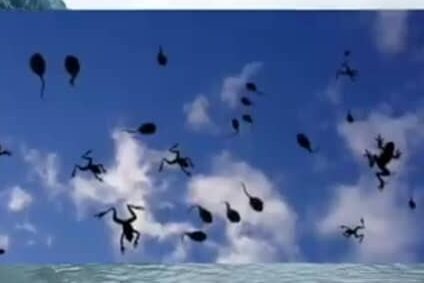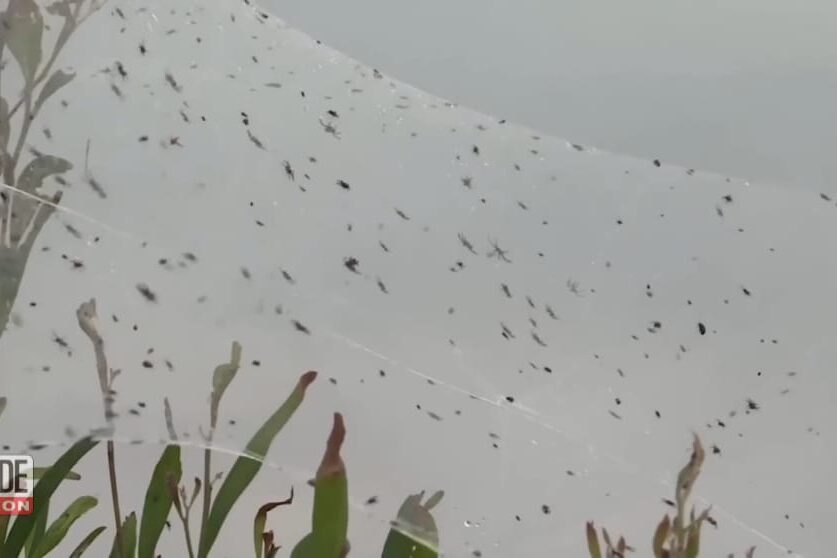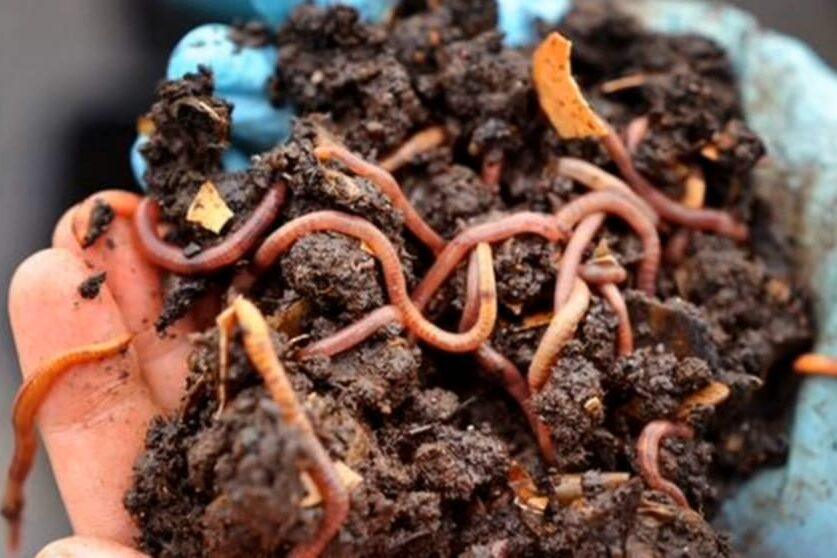The Day It Rained Fish in Honduras

Imagine the scene: dark clouds roll in over the Honduran town of Yoro, thunder cracks, the wind picks up… and suddenly, fish start slapping the cobblestone streets. Locals call it “Lluvia de Peces,” or “Rain of Fish,” and it’s been happening almost every year for over a century. But we’re not talking about a fishy metaphor—this is literal marine rain. Tiny silver fish, flopping helplessly on land miles from the nearest body of water. Scientists believe waterspouts—essentially tornados that suck up water and everything in it—could be the culprits, but here’s the twist: many of these fish aren’t species found nearby. It’s as if the clouds have their own personal aquarium. Eyewitnesses describe the surreal moment when the skies open and a wet thudding sound begins to replace the usual pitter-patter of raindrops. Children run gleefully to collect the fish, while adults quietly marvel—or pray.
What’s even more mind-bending is that villagers treat the event like a divine blessing, collecting the fish for a communal feast. It’s part weather phenomenon, part miracle, and 100% surreal. Local legends say it’s the work of a missionary who once prayed for food during a famine. Whether you believe in science or serendipity, there’s something magical about a sky that feeds you. Each year, anticipation builds as locals wait for the mysterious rain, turning an otherwise small town into a stage for one of nature’s strangest performances. And if you think raining fish is freaky, wait till we talk about frogs that fell from the sky in Japan like a plague of biblical proportions…
Frogfall in Japan

It was a seemingly normal summer day in Ishikawa Prefecture. Until people started hearing… plops. Not raindrops. Not hail. Frogs. Tiny green frogs, to be exact, falling from the sky like Mother Nature was playing a prank with her weirdest inventory. Some bounced off car hoods. Others landed with sticky splats on sidewalks. The whole town seemed caught in a bizarre game of leapfrog—only no one signed up to play. Witnesses described the scene as both hilarious and horrifying, with one café owner swearing a frog hit her awning and slid into someone’s latte.
What made it weirder? No rainclouds. No storms. Just frogs out of nowhere. Scientists theorized that small tornado-like wind systems could’ve scooped them up from ponds and deposited them midtown like express mail from the wetlands. But the lack of accompanying storm signs left everyone scratching their heads—and nervously checking the sky for toads in top hats. One theory even suggested migrating birds might have dropped them, although how hundreds could fall at once remains a mystery. Local kids tried to rescue them, while adults just wanted it to stop. Similar frogfalls have been reported in Hungary, the UK, and even ancient Egypt. Which begs the question: if frogs are falling now, what else could be next?
When It Rained Spiders in Australia

Yes, spiders. Thousands of them. Falling. From. The. Sky. In 2015, residents of Goulburn, New South Wales, looked up to see white silken threads floating gently through the air… and then realized those threads were attached to spiders—LOTS of spiders. Picture snowfall, but instead of soft flakes, it’s lightweight baby arachnids parachuting down like creepy little paratroopers. This phenomenon, called “ballooning,” happens when spiders release silk to catch the wind and travel to new territories. It’s usually harmless. Except when they all do it at once. Locals described waking up to find their gardens—and sometimes cars—coated in shimmering, sticky silk. Some even claimed they felt the faint tickle of spider legs during their morning walks.
The result? Entire fields blanketed in webbing, looking like Halloween came early. Scientists explained it calmly, like they weren’t absolutely horrified. “It’s just part of their migratory process,” one said, possibly while ignoring the twitching mass of spiders crawling up a fence post. While most spiders involved are tiny and non-venomous, the sheer volume makes the scene look apocalyptic. People posted videos online with captions like “Nope” and “Burn it all.” And while this isn’t the only case of spider rain—it’s been documented in Brazil and Argentina too—it might be the most dramatic. So far we’ve covered frogs, fish, and spiders. You might be thinking: At least mammals are safe, right?
The Squirrel Storm of LA

This one’s not quite a rain of squirrels—but it’s close enough to raise your eyebrows and tighten your hoodie strings. Back in 2012, several residents in Los Angeles reported squirrels falling out of trees and from telephone poles like hyper-caffeinated gymnasts losing their grip. The culprit? An unusual heatwave mixed with smoke from nearby wildfires. The extreme stress on wildlife triggered bizarre behaviors—some squirrels fled upward and, overwhelmed, dropped mid-flee. While not technically “falling from the sky,” the sheer randomness of it made the city feel like it was caught in a strange nature experiment. One jogger even had to dodge a squirrel mid-air while crossing Sunset Boulevard.
It raised questions about how weather extremes can literally knock animals from their natural habitats and into our parking lots. People started joking about “Code Squirrel” weather alerts, but scientists didn’t laugh. The event hinted at how rising temperatures and environmental stress could cause more wildlife “rains” in the future—not just as freak incidents, but as distress signals from a changing planet. Wildlife experts warned that similar mass disorientation could happen with bats, birds, and even marine creatures. It was a reminder that when ecosystems are thrown off balance, chaos often follows. Feeling uneasy yet? We’re just getting started.
The Worm Shower of Norway

Picture this: You’re out for a jog in Bergen, Norway. The sky is overcast, but nothing dramatic. Suddenly, the path in front of you is covered in… wriggling worms. That’s exactly what happened in 2015 when a biology teacher (of all people) discovered hundreds of earthworms scattered across the snow. No footprints. No holes. Just worms, as if they teleported in mid-air. His report set off a flurry of similar claims across the region, with people emailing photos of worm-covered fields. One farmer said it looked like someone had emptied a bait shop over his pasture.
Locals were baffled. It wasn’t the first time this had happened, either. Similar cases had been reported in Sweden and Scotland. Some scientists suggested strong winds picked up the worms from fields and carried them like protein-packed confetti. Others weren’t convinced, citing the lack of storm evidence and the logistical absurdity of airborne worms. There were no tornadoes, no rain—just… worms. It’s like nature had a moment of glitching. A wriggly, slimy moment that left everyone side-eying their skylights.
Blood Rain in Kerala

In 2001, the Indian state of Kerala experienced a rainstorm that painted the streets—literally red. For weeks, crimson rain fell sporadically, staining clothes, buildings, and the imaginations of anyone watching. It wasn’t a light tint either—this was deep, vivid red, the kind that made people think of omens, curses, or apocalypse trailers. Initial theories ranged from algae to dust from distant deserts, but some people believed it was alien cells. Like, from space. One theory even claimed the cells came from a meteor explosion in the atmosphere. The eerie color and timing had conspiracy blogs lighting up like Christmas trees.
Microscopic analysis showed particles in the rain resembled biological cells—but without DNA. Alien mystery? Airborne fungus? Government cover-up? The debate spiraled. Eventually, scientists pinned it on a type of airborne spore from a local lichen. Which, okay, makes it slightly less dramatic. But let’s be honest—blood rain sounds cooler than “high-density lichen microspores.” Even after the science settled, many in Kerala weren’t quite convinced. This entry might not include falling animals, but it shows that the sky has more than one creepy trick up its sleeve.
Fish From the Sky in Texas

Just when Texans thought they’d seen everything, the skies over Texarkana opened up in December 2021 and dumped… fish. Again. But this wasn’t a case of tiny minnows gently wafting down. Some of these fish were six inches long. One man found one on his truck windshield. Another was smacked while walking out of a grocery store. The scene was so ridiculous that people assumed it was a prank—until it started happening across town. It was like a nature documentary took a sharp left turn into slapstick.
The cause? A thunderstorm + a nearby water body + a rogue waterspout = instant seafood delivery. Scientists confirmed it was a textbook meteorological freak-out. But the whole event felt like something out of Jurassic Park—as if time had hiccuped and dropped a prehistoric pond on modern-day Main Street. Kids ran around collecting them like Pokémon. Adults took photos with fish in their hands like end-times trophies. It was weird, hilarious, and deeply unsettling—all at once. And maybe that’s the real takeaway: when it comes to the sky, expect the unexpected. Fish, frogs, spiders, even blood—it’s a wild world up there. And next time you hear a splat on your windshield… maybe don’t assume it’s just rain.


